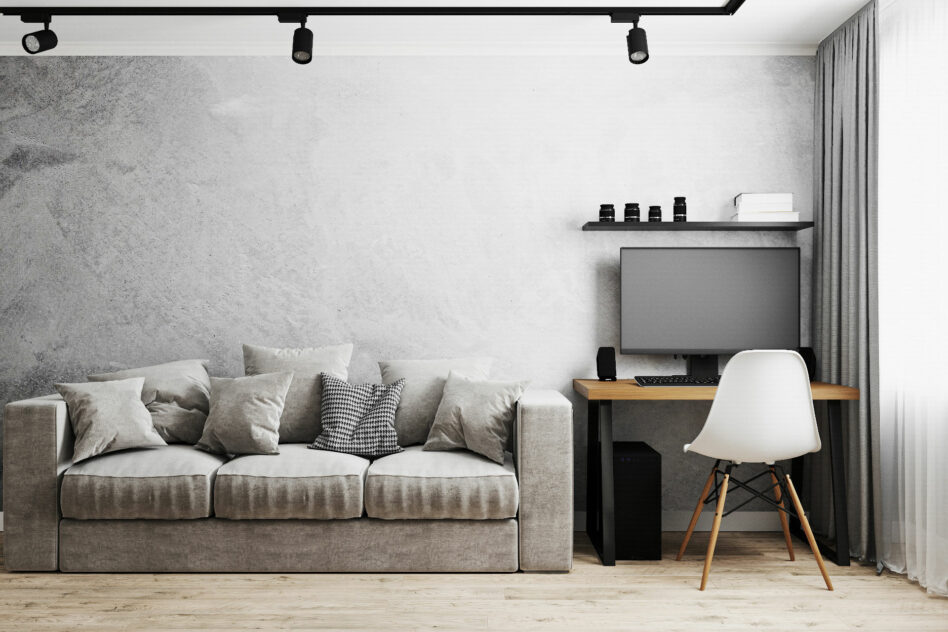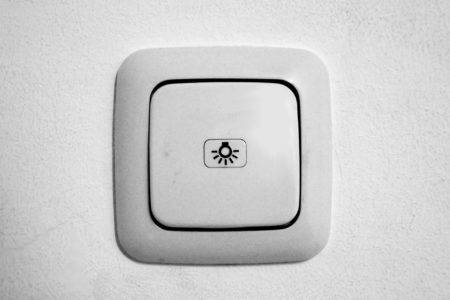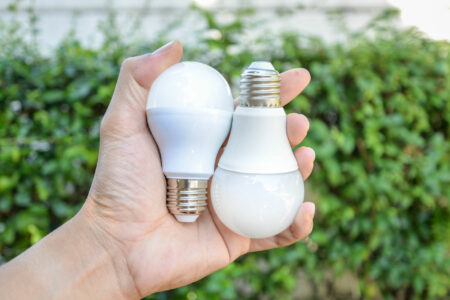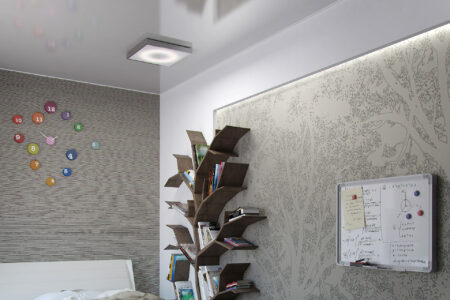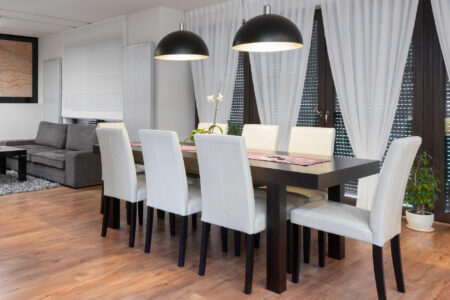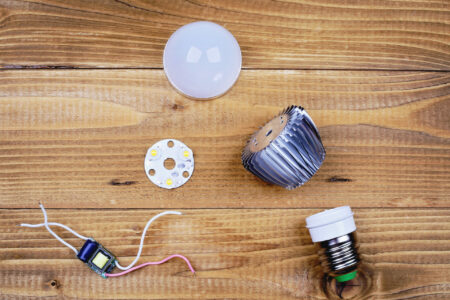Track lighting is a versatile option used in any space requiring accent, task, and ambient lighting. Thanks to numerous design options and the ability to position the track heads as you see fit, track lighting can help you to create a beautiful and functional space.
With many types of track lighting available, you’re spoilt for choice between attractive fixture designs and innovative light layouts. The best thing about track lighting is that you can change the look whenever you want by changing the light fixtures or adding additional track options.
Different Types Of Track Lighting
Track lighting was patented in 1961 by Lightolier’s Anthony C. Donato. The first track lighting design was vertical, changing the world of decorative residential and commercial lighting forever.
A basic track lighting setup can be classified as a lighting option that includes the following components:
- A hollow square-edged bar (track)
- Exposed electrical conductors (conduits) inside the track
- Lighting fixtures (called heads or bullets) that insert into the track
Track lighting has grown into a versatile lighting option that’s ideal for people who love to play around with lighting effects. Due to the ability to readjust the position of track lighting fixtures, it’s a lighting type that’s ideal for display lighting.
The ability to customize and rearrange track lighting appeals to people who see lighting as part of the
Standard Track Lighting
When it comes to types of track lighting in the United States, you will find three standard types called Halo, Juno, and Lightolier, named after the track light manufacturing companies. These standard track light options are grouped under the term “traditional” and “standard linear” track lighting.
| Type Of Track Lighting | Description Of Track Lighting |
| Halo (H-Type) | 120-volt system 3 contacts (prongs) Distance between contact tips – 7/8″ Manufacturer: Cooper Industries |
| Juno (J-Type) | 120-volt system 2 contacts (prongs) Distance between contact tips – 1″ Manufacturer: Juno Lighting Group |
| Lightolier (L-Type) | 120-volt system 2 contacts (prongs) Distance between contact tips – 7/8″ Manufacturer: Lightolier Company |
Standard linear track lighting works on a system that connects light fixtures (heads) to a track that features electrical conductors, powering all the fitted track heads no matter their position.
Typically, the track is mounted or suspended to a ceiling or wall, and the light fixtures are secured inside the track.
When the heads are fitted inside the track, it touches the inside ledge of the bar where the electrical conduit is located. The metal in the base of the heads (contacts) makes contact with the exposed electrical conduit, which powers the light fixtures throughout the electrified track.
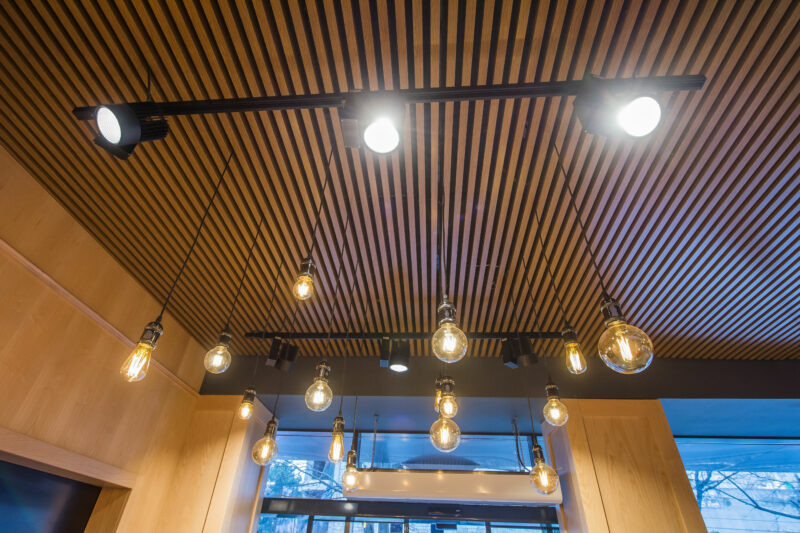
When you purchase a track lighting system, especially the ones where you can interchange the lighting fixtures, it’s important to note that each system (H-J-L-types) is not interchangeable.
Halo light fixtures aren’t compatible with a Juno track, and vice versa. Make double sure your favorite light fixtures are compatible with the rail you intend to buy.
Standard track lighting is available in a single-circuit, and double-circuit track lighting system commonly referred to as the J2 system.
The J2 system (two-circuit track lighting system) varies from manufacturer to manufacturer. However, they all allow the user full control over the different track heads. Two different light switches control one single track as two individual power circuits are connected.
The two-circuit track lighting system gives the user full control over track heads fitted on the rail.
Different Types Of Standard Track Lighting Shapes
Track lighting is available in different shapes and sizes, ranging from 2-foot, 4-foot, 6-foot, and 8-foot track lengths. The overall length of the track can be increased by connecting tracks for an extended system. You can also shorten them by way of field-cutting.
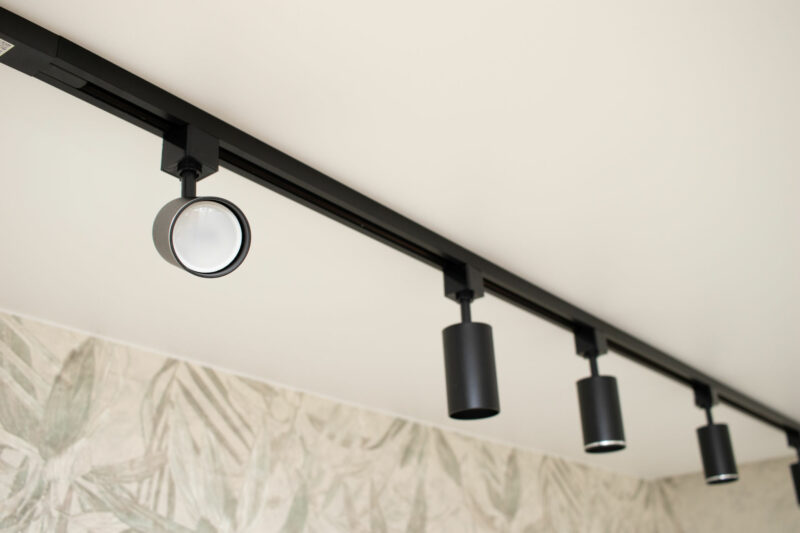
Here are the options when choosing a specific standard track lighting shape:
- Standard track lighting: Range from 2 ft to 8 ft bars, and these linear tracks mount directly to a ceiling or wall. The light fixtures can be moved along the straight track to the desired position. Standard track lighting tracks can be arranged and connected to form different shapes.
- Fixed track lighting: The track, curved or straight, hangs from a fixed ceiling mount (standoff.) The light fixtures are fixed onto the track and can’t be moved around, with only the light angles able to adjust from the stationary spot.
- Swing arm track lighting: The lights are fixed to the track, similar to fixed track lighting, with the difference being the addition of track lighting “arms” able to swivel on special joints.
- Suspended track lighting: As the name suggests, suspended track lighting is dropped or suspended away from the ceiling or wall by incorporating connector pieces. Suspended lighting works well when you need a direct light source over an area or object.
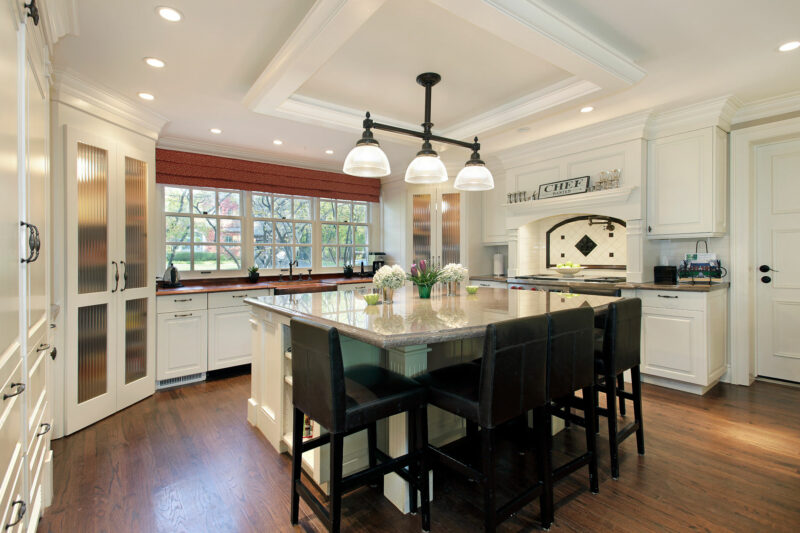
Standard Track Lighting Fixtures
Track lighting fixtures, commonly referred to as “heads” or “bullets,” connects to the track and are one of the most crucial considerations when purchasing a track lighting system. The most popular track lighting fixtures are cylinders (spotlight-like heads).
Cylinders track heads are easy on the eye and blend beautifully with most design styles. These cylinder-shaped heads are available in bullet-shaped, flat back, round back, and mesh back designs.
Pendant lights are another popular track light fixture option, and the beauty of track lighting is that you can mix and match different track heads to create your unique aesthetic.
Gimbal (ring-like) fixtures offer 180 degrees of motion and work well in numerous decors. The design is one of a bulb fitting into a ring that’s held together by a bracket. High-tech gimbals feature space-like ring trims.
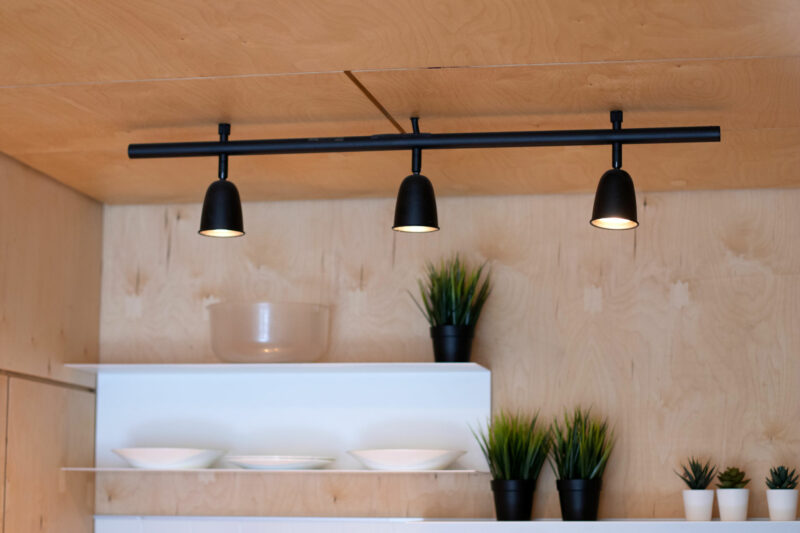
Track heads that are fully dimmable make an excellent choice for task lighting or when you want to create an ambient atmosphere. Standard track lights come in various shapes, designs, and materials, and finding your perfect set will be an easy and fun experience.
Most heads have a built-in transformer that helps to step down the 120-volt current of your home to 12 or 24 volts. Built-in transformers in the heads mean you don’t have to worry about additional transformers when choosing a standard linear track lighting system.
Track Lighting Voltage Options
Line voltage or low voltage systems is used to power track lighting, with the most prevalent method being line voltage when installing standard track lighting.
Line voltage refers to track lighting connected to your home’s existing 120-volt system via a hidden conductor, working through a power switch that turns the lights on and off.
Tracks are powered by wiring attached to the main circuit that connects to the track, typically in 2- to 3-wire arrangements, via existing electrical circuits in the ceiling.
A low-voltage system features a transformer that lowers the voltage to 12 or 24 volts. The low-voltage system uses less energy compared to a line-voltage system, incorporating smaller bulbs and a wider variety of light fixtures that are more focused.
Monorail Track Lighting
Monorail track lighting systems are the “flexible” brother of the more standard linear track lighting options. Monorail tracks (rails), available in 4-foot and 8-foot sections, are affixed to the ceiling with a ceiling mount and can be hand-shaped into many configurations.
Whereas standard track lighting is positioned linearly to the ceiling, monorail lighting drops down from the ceiling and is known for its advanced flexibility regarding track curves and shapes.
The rail of a monorail lighting setup doesn’t require a square bar, characterized by standard track lighting, as it features a narrow and bendable rail suspended from the ceiling by rods referred to as standoffs.
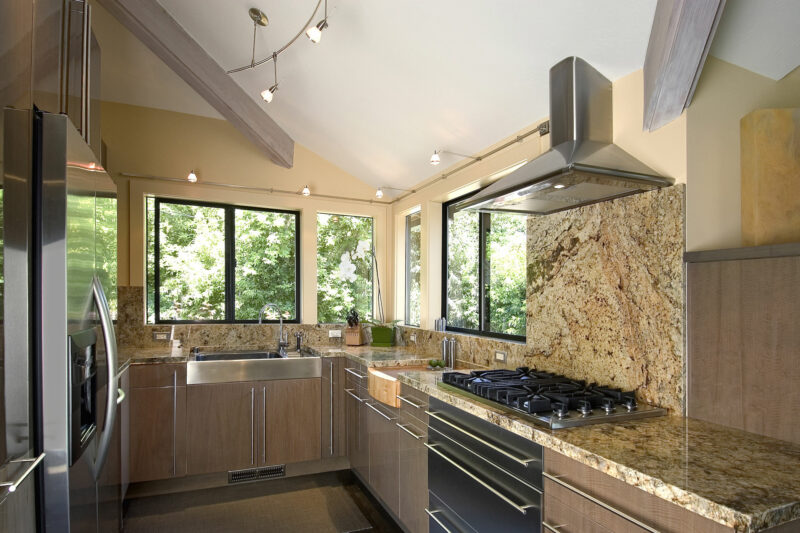
Monorail designs can be spiral in nature with “S” curves, giving the consumer many lighting design options. The flexibility of the track depends on the material used in its construction.
Light fixtures, such as pendants, easily slide along the rail, electrified by a current that coerces through the exposed metal track. Most monorail systems require a transformer to lower the voltage flowing through the rail.
Conduits are used to conduct the low-voltage electricity source along the track. Metal plates fitted on the sides of an insulating connector act as conduits.
Cable Lighting
Cable lighting is a track lighting type that doesn’t feature a track. Instead, cable lighting consists of a combination of the following components:
- Metal cables
- Turnbuckles
- Supports
- Tethers
- Couplers
- Connectors
- Alligator clips
- Transformer
In a nutshell, cable lighting is two sections of metal cable (which must be able to conduct electricity) attached to a ceiling or walls using a suspension system. The cables hang straight down or are applied horizontally.
A transformer, providing low-voltage power, connects to both cable wires. Light fixtures are then attached to both wires and light up accordingly. Cable lighting is a track lighting type that can be used innovatively, as you can add supporting cables to the overall design without powering them up.
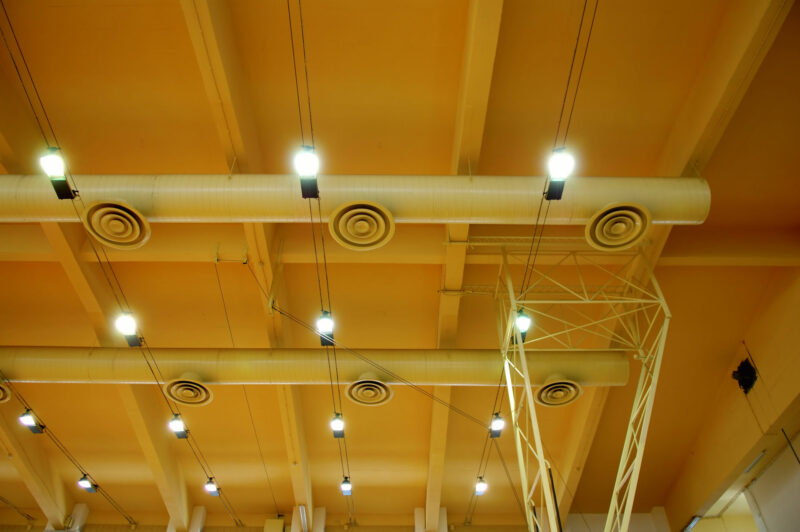
Cable lighting systems require transformers to deliver direct power to the wire cables and to lower the standard 120-volts power found in residential homes to 12 or 24 volts. Each set of cable track lights requires a designated light switch, as cable lighting is designed as a single-circuit operation.
The energy required will depend on how much power your chosen light fixtures consume. Transformers deliver varying amounts of power, so the light fixtures will dictate how many transformers will be required per cable lighting setup.
Choosing The Right Type Of Track Lighting For Your Home
With so many track lighting types on the market, it’s a somewhat involved choice when deciding which design is perfect for your home.
All types of track lighting, when fitted thoughtfully, can give you the following lighting advantages:
- Accent lighting: The beauty of track lighting is that you can optimize the adjustability of the lighting fixtures to your advantage. Spotlight heads can be aimed in various directions, making highlighting a specific item or area in a room easy.
- General lighting: Track lighting can be your main source of general lighting in a room. When paired with the right bulbs and a dimmable system, track lighting can also create soft ambient light where required.
- Task lighting: Track lighting is perfect when you need a task lighting source for areas where tasks are performed, such as the kitchen work table or office desk. The flexibility to spread the light sources where required makes track lighting an easy choice to assist with task lighting.
- Customization: Compared to other lighting types, track lighting is miles ahead regarding customization options. Tracks can be linked to form interesting designs, while heads can be changed and rearranged as you see fit. From spotlights to chandeliers and pendants, your light fixtures don’t need to stay the same all year round. With track lighting, the design options are endless.
The choice of track lighting often depends on the design aesthetic, how it will integrate with the room in which it is to be used, and the lighting requirements. You can hide the transformer remotely if you’re installing a monorail in a new construction.
A surface transformer would have to be used for a ceiling already in place, and choosing a small one that doesn’t detract from the monorail design becomes important.
If hiding the transformer isn’t an option, then a sleek-looking standard track will fit better in the scheme of things, whereas tall ceilings could benefit from lower hanging monorails or cable lighting strung across the room.
Track Lighting Voltage System Considerations
Standard linear track lighting systems wire into the home’s electrical system, similar to installing a ceiling fan, and are the easiest to maintain. Choosing a track lighting type that works on line-voltage negates the necessity of installing a transformer, making a line-voltage installation less expensive.
The number of light fixtures you want to employ will also play a part in your track lighting type decision. Every light fixture has a specific wattage, and you have to add all of them up and subtract them from the available wattage of the track circuit, deducting 20% for safe operation.
Track lighting systems operating on a line-voltage system are often fitted with larger bulbs and will add more dollars to the energy bill compared to a low-volt system. Track lighting, operating on a line-voltage system, is exposed to the following voltage:
- 15 amp, 120-volt lighting circuit: The average safe wattage supported on such a circuit is 1,440 watts.
- 20 amp, 120-volt lighting circuit: The safe average wattage that can be supported on such a circuit is 1,920 watts.
Low-voltage systems require transformers and adapters, which increases installation costs but tend to last longer than line-voltage systems. The low-voltage track light system uses less energy and smaller bulbs, resulting in greater color and light distribution flexibility.
Track lighting, operating on a low-voltage system, is dependent on power from the transformer:
- 300-watt transformer: The average usable wattage from a 300-watt transformer is approximately 650 watts.
An integrated LED lighting system gives you a choice between line-voltage and low-voltage and is the most cost-effective, low-maintenance option, with LED lamps typically lasting over 50,000 hours.
The Type Of Railing
One of the most important aspects when deciding what track lighting type to purchase is to consider the space and what railing or track will fit best. Deciding on the required length and shape of the lighting will make your choice easier.
Choose a standard linear track option if you’re looking for a straight track. A monorail design will work better if you want a curvy shape. Consider if you want to add to the track in the future and purchase an option that allows for future customization.
The choice of track lighting often depends on the design aesthetic, how it will integrate with the room in which it is to be used, and the lighting requirements. You can hide the transformer remotely if you’re installing a monorail in a new construction.
A surface transformer would have to be used for a ceiling already in place, and choosing a small one that doesn’t detract from the monorail design becomes important.
If hiding the transformer isn’t an option, then a sleek-looking standard track will fit better in the scheme of things, whereas tall ceilings could benefit from lower hanging monorails or cable lighting strung across the room.
The Connector Type
If you choose a Halo-type track lighting system, you must be sure that the track heads you prefer are compatible with the specific system.
The three connection types (Halo, Lightolier, and Juno) aren’t interchangeable. If you choose a type, you need to stick to the track heads available for the specific system. Be sure that the type of connector system and its compatible fixture heads are compatible with the type of lightbulb (halogen, fluorescent, incandescent, and LED) you prefer.
Track Lighting Cost
The cost of specific types of track lighting can play a role in track lighting choice. Complex track lighting systems cost more than simple ones, and you pay extra for additional features. A monorail system tends to be more expensive than a standard track lighting system.
If you’re more inclined to shop for functionality than aesthetic appeal, a track lighting system should cost no more than $200. Installing track lighting into pre-existing wiring will cost less than installing new wiring.
The Size Of The Room That Needs Illumination
The size of the room in need of illumination will help you decide which type of track lighting will work best. Monorails work well in smaller areas, whereas standard track lighting (which can be extended if necessary) works well in bigger spaces.
The number of fixture heads you can apply to the track lighting is also important. You may need more than 10 lights to do a room justice. Only considering a track lighting system that can handle 10+ lights will guide you to the right type and design.
